Death
Mouth Gun
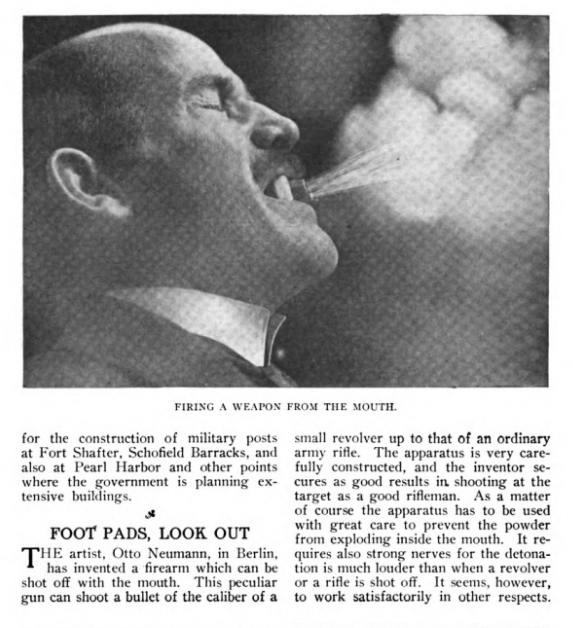
Source.
Posted By: Paul - Sat Dec 08, 2018 -
Comments (6)
Category: Death, Chindogu, 1910s, Weapons
The Tractor Fender Will of Cecil George Harris
June 8, 1948: Cecil George Harris got pinned under his tractor. Fearing he wouldn't survive, he scratched the following message onto the fender of the tractor: "In case I die in this mess I leave all to the wife. Cecil Geo Harris."He did end up dying, but his scratched message was accepted as a valid will by the courts, and has served as a precedent ever since for cases of holographic or handwritten wills. The fender is preserved to this day at the University of Saskatchewan College of Law.
More info: Global News
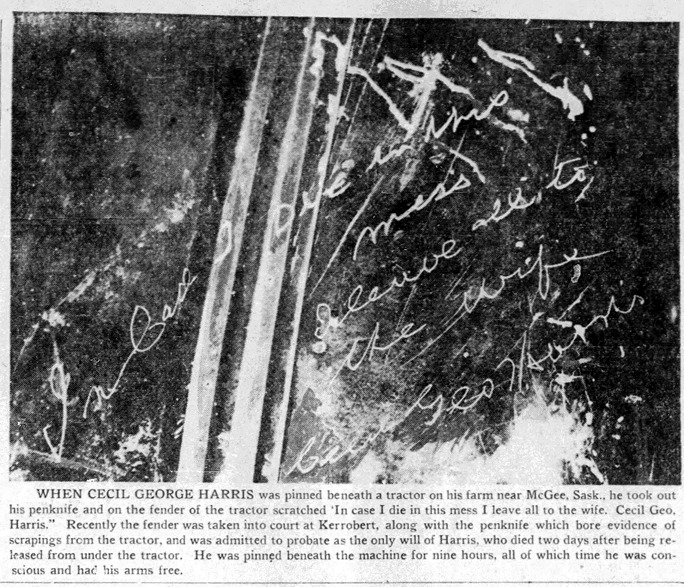
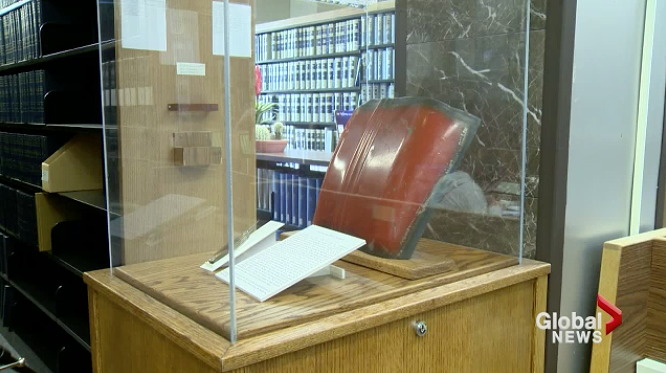
Posted By: Alex - Mon Dec 03, 2018 -
Comments (0)
Category: Death, Inheritance and Wills, Law
Motorized Skis
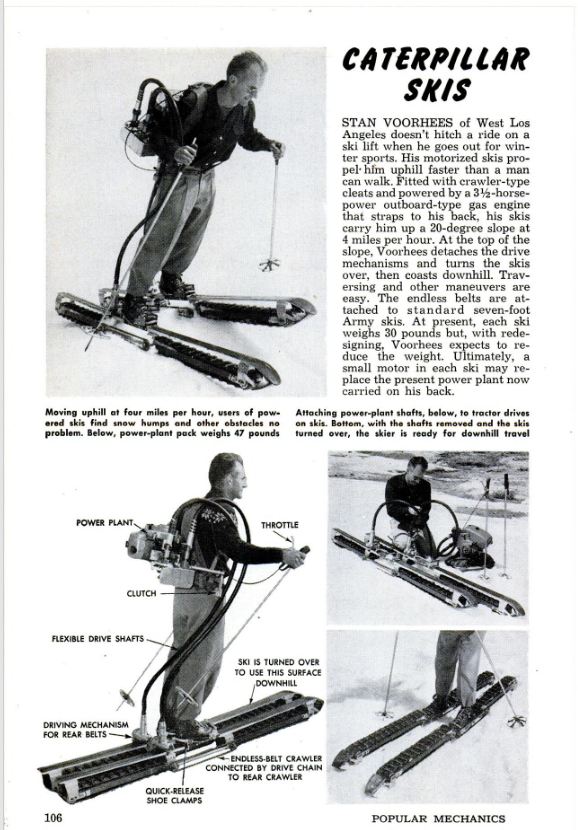
Source.
Posted By: Paul - Fri Nov 16, 2018 -
Comments (2)
Category: Daredevils, Stuntpeople and Thrillseekers, Death, Chindogu, 1950s
Follies of the Madmen #394
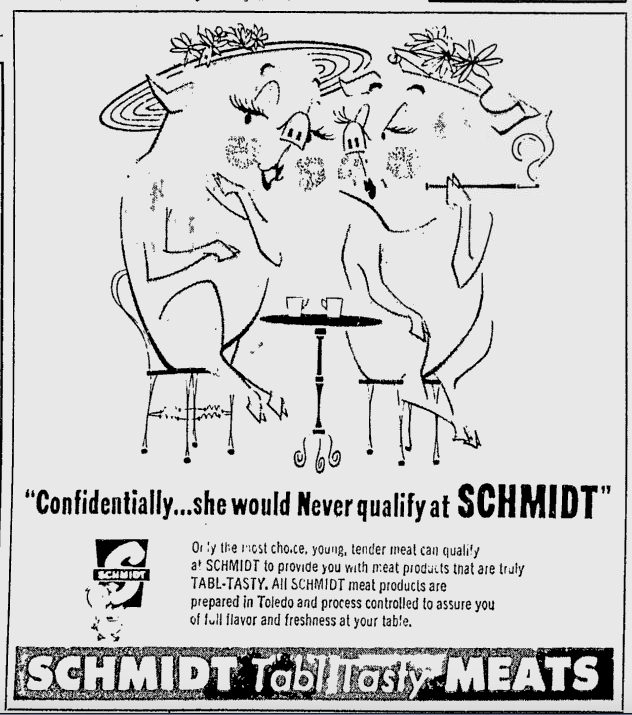
Sexy female pigs discuss sending one of their own kind to the slaughterhouse.
Original ad here.
Posted By: Paul - Sun Nov 11, 2018 -
Comments (3)
Category: Animals, Anthropomorphism, Business, Advertising, Death, Food, 1960s
Reasons for Murder
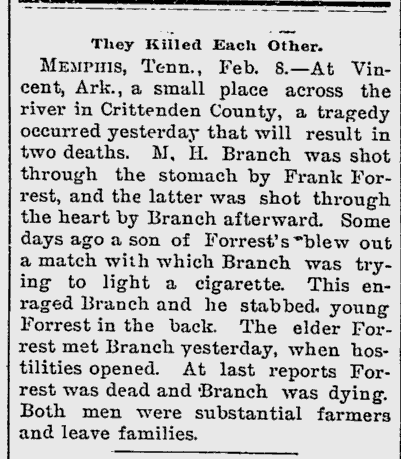
Source.
Posted By: Paul - Fri Oct 26, 2018 -
Comments (4)
Category: Annoying Things, Antisocial Activities, Death, Stupid Criminals, Nineteenth Century
The Mystery of Ambrose Small
Master Weirdist Charles Fort once made a jest involving two mysterious vanishings: "Was somebody collecting Ambroses?"One of the Ambroses involved was the famous Ambrose Bierce.
The other was much less-known: Ambrose Small.
One would think that after so many years, all had been said about Small's disappearance. But I can't find any reference to this further extension of the case as seen below.
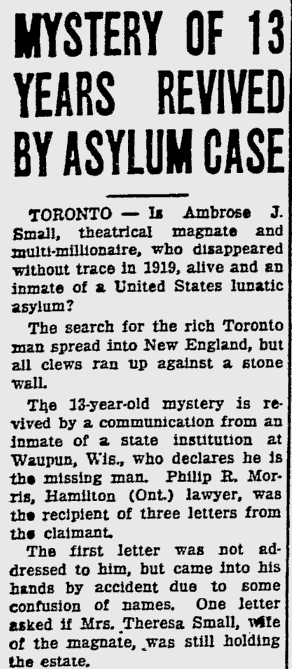
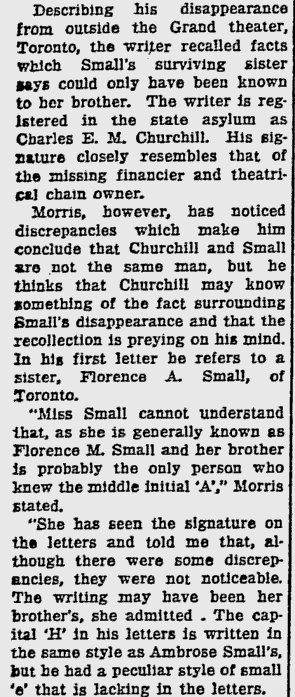
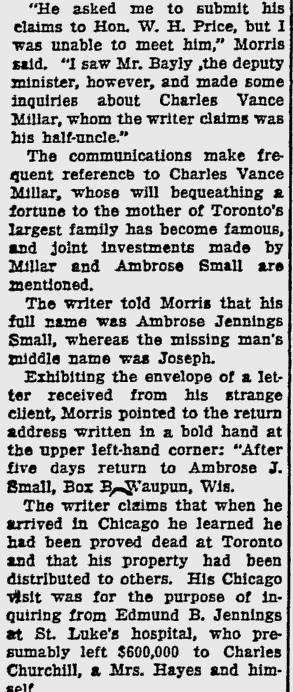
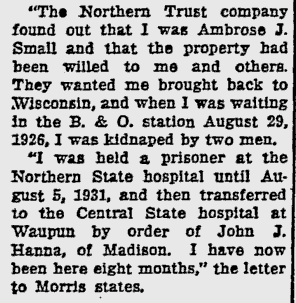
Original article here.
More on the Small case.
Posted By: Paul - Mon Oct 22, 2018 -
Comments (3)
Category: Crime, Cult Figures and Artifacts, Death, Twentieth Century
Paved Deer
I've heard of road-line painting crews not bothering to move roadkill out of the way. But I hadn't heard before of a paving crew simply paving over a dead animal instead of moving it.For some pics of roadkill painted over see: improbable research
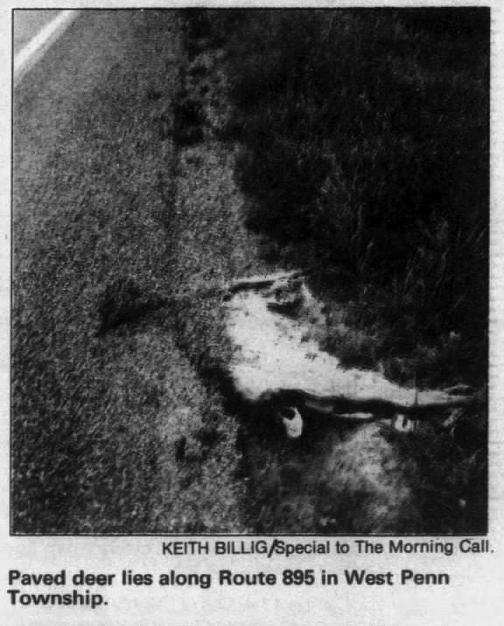
Allentown Morning Call - Aug 22, 1996
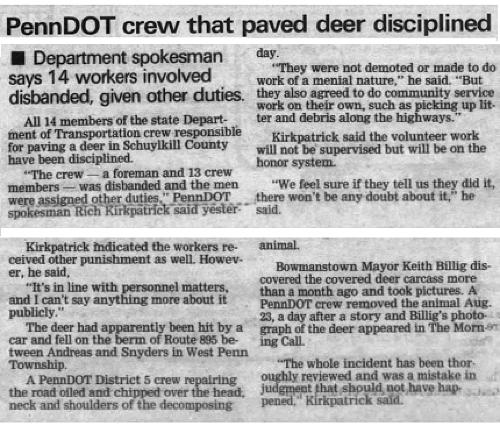
Allentown Morning Call - Sep 14, 1996
Posted By: Alex - Fri Sep 21, 2018 -
Comments (0)
Category: Animals, Death, Highways, Roads, Streets and Traffic
Girl Frozen Alive
A popular publicity stunt for selling cars during the 1960s.
Philadelphia Inquirer - July 10, 1968

Louisville Courier-Journal - Nov 12, 1965

Marion Star - June 17, 1965

Lebanon Daily News - Oct 7, 1968

Cincinnati Enquirer - May 7, 1969
Posted By: Alex - Wed Sep 19, 2018 -
Comments (5)
Category: Death, Publicity Stunts, 1960s
Flying Funeral Directors
Founded in 1960, and apparently still going strong. Membership is limited to licensed funeral directors who are also pilots (licensed or student).It was initially called the Flying Funeral Directors of America, but now they call it the Flying Funeral Directors Association. So they must have opened it up to international members.
Their website: flyingfuneraldirector.org

Coshocton Tribune - Oct 16, 1960

Cincinnati Enquirer - Nov 2, 1975

Posted By: Alex - Thu Sep 13, 2018 -
Comments (1)
Category: Clubs, Fraternities and Other Self-selecting Organizations, Death, Air Travel and Airlines
Method of Preserving the Dead
Patented Dec 29, 1903 by Joseph Karwowski:In carrying out my process I first surround the corpse 1 with a thick layer 2 of sodium silicate or water-glass. After the corpse has been thus inclosed within the layer of waterglass it is allowed to remain for a short time within a compartment or chamber having a dry heated temperature, which will serve to evaporate the water from this incasing layer, after which molten glass is applied to the desired thickness. This outer lay of glass may be molded into a rectangular form 3, as shown in Fig. 2 of the drawings, or, if preferred, cylindrical or other forms may be substituted for the rectangular block which I have illustrated. In Fig. 3 I have shown the head only of the corpse as incased within the transparent block of glass, it being at once evident that the head alone may be preserved in this manner, if preferred.
It will be at once noted that a body preserved in this way may be kept indefinitely, as the body being hermetically inclosed within the outer glass covering it will be impossible for air to reach it, and hence it will be effectually preserved from decay. The glass surrounding the corpse being transparent, the body will be at all times visible.

Posted By: Alex - Fri Sep 07, 2018 -
Comments (6)
Category: Death, Inventions, Patents, 1900s

| Who We Are |
|---|
| Alex Boese Alex is the creator and curator of the Museum of Hoaxes. He's also the author of various weird, non-fiction, science-themed books such as Elephants on Acid and Psychedelic Apes. Paul Di Filippo Paul has been paid to put weird ideas into fictional form for over thirty years, in his career as a noted science fiction writer. He has recently begun blogging on many curious topics with three fellow writers at The Inferior 4+1. Contact Us |




